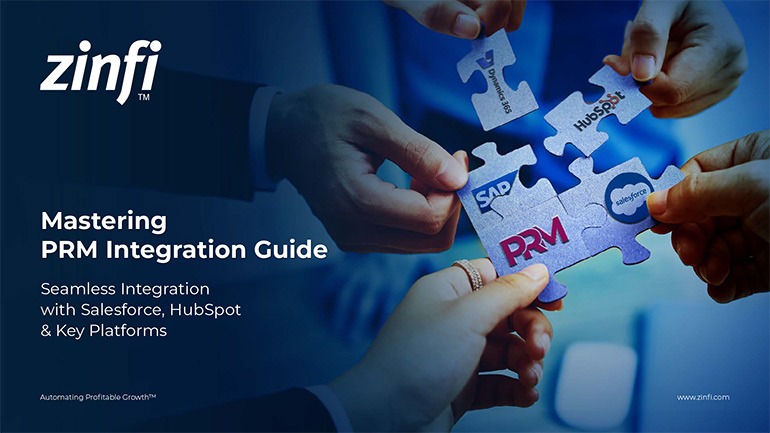Best Practices Articles

Partner Relationship Management (PRM) – The Key to Business Growth
Today, businesses work with partners to grow, sell more, and serve customers better. These partners help them grow, sell more, and serve customers better. These partners include vendors, distributors, resellers, and service providers. Managing these relationships effectively is essential for long-term success, but it can also be challenging.
Without a structured system in place, companies may struggle with miscommunication, inefficiencies, and missed business opportunities.
To solve these problems, many businesses turn to Partner Relationship Management (PRM). PRM is a system designed to help companies organize, track, and optimize their relationships with partners. A PRM system ensures that partners receive the necessary support, resources, and training to perform their roles efficiently. It also provides businesses with valuable insights into partner performance, sales data, and engagement levels.
A PRM system is more than just a database of partner information. It helps businesses work faster, cut down manual tasks, and collaborate better with partners. PRM software gives partners real-time information and tools to work better and faster.
This article will explain why Partner Relationship Management is important for today's businesses. It helps improve how companies manage their channel partners. It also increases efficiency and works well with other business tools to promote growth.
Understanding Partner Relationship Management
What is PRM?
Partner Relationship Management, often called PRM, is a system that helps businesses manage relationships with various types of partners. Partners like resellers, distributors, and service providers help deliver products and services to customers. A PRM system acts as a centralized platform that facilitates collaboration between companies and their partners. It provides features such as sales tracking, communication tools, training modules, and performance evaluation.
A strong PRM system ensures that businesses and their partners can work together smoothly. PRM software stores all partner information in one place, replacing messy spreadsheets, emails, and calls. This makes it easier to manage large partner networks and ensures that each partner has the support they need to succeed.
Why PRM is Important
Businesses depend on many partners to sell products, but managing them without a system is hard. Without PRM software, businesses struggle with miscommunication, slow workflows, and delayed decisions. Without a good partner system, companies might not support their partners well. This can lead to lower sales and less engagement.
With a PRM system, businesses can improve the way they manage partners by providing a structured and organized approach. PRM makes it easier to track sales, approve deals, communicate with partners, and analyze performance. Companies that invest in Partner Relationship Management often experience better partner engagement, higher sales numbers, and improved efficiency.
How PRM Improves Business Operations
Improving Partner Onboarding
One of the biggest challenges businesses face when working with partners is onboarding. When new partners join a company’s network, they need proper training, documentation, and access to resources. If onboarding is slow or messy, partners may take longer to sell or understand the company's products.
A PRM system streamlines onboarding by offering step-by-step training programs. New partners can access learning modules, videos, and documents that help them understand the company’s offerings. Many PRM software solutions also include certification programs that test partners’ knowledge and provide them with official recognition. This helps partners feel more confident and ready to sell.
Good onboarding helps partners start selling faster. They are also more likely to stay engaged with the company because they receive clear guidance and support from the start. A well-structured Partner Relationship Management approach ensures that all partners have the information they need to be successful.
Automating Partner Management Tasks
Managing a large number of partners manually can be time-consuming. Businesses need to track sales, approve deals, and provide ongoing support, which can consume valuable time and resources. PRM software helps by automating many of these tasks, making it easier for companies to manage partners efficiently.
For example, a PRM system can automate the deal registration process. Partners can submit deals through the PRM platform, which automatically sends them to the right team for approval. This speeds up deal processing and avoids delays.
Performance tracking is another area where automation plays a key role. A PRM system collects data on partner sales, customer interactions, and revenue contributions. Businesses can use this data to identify high-performing partners and provide additional support to those who need it. By automating these processes, companies can focus on strategic growth rather than administrative tasks.
Enhancing Communication and Collaboration
A strong partner ecosystem depends on clear and effective communication. When partners do not receive timely updates, they may miss important business opportunities. Poor communication can lead to confusion, delays, and lost revenue.
A PRM system solves these challenges by providing a centralized communication hub. Businesses can use PRM software to send instant updates about new products, promotions, and policy changes. Many PRM platforms also include messaging tools that allow partners to communicate directly with the company in real time.
By improving communication, businesses can ensure that partners stay informed and engaged. This leads to better coordination, stronger relationships, and improved performance.
Enhancing Channel Partner Management
Managing multiple partners across different regions and industries can be complex. Companies need to ensure that each partner has the right resources, training, and support to succeed. Partner Relationship Management makes this easier by providing businesses with tools to track and manage partner activities effectively.
A PRM system allows businesses to group partners based on factors such as location, expertise, and sales performance. This makes it easier to provide targeted training and support. Companies can also set up incentive programs to reward top-performing partners and encourage engagement.
A structured channel partner management strategy ensures that partners remain motivated and committed to the company’s success. Supported partners sell more and serve customers better.
The Future of PRM: AI and Automation
Technology is transforming Partner Relationship Management, and many modern PRM software solutions now incorporate artificial intelligence (AI) and automation. These technologies make PRM even more effective by improving efficiency and providing valuable business insights.
AI helps businesses make smarter decisions by analyzing partner performance data and predicting future trends. For example, AI can identify which partners are most likely to succeed based on their past performance. This allows businesses to focus their efforts on the right partners and provide additional support where needed.
Automation further enhances PRM by reducing the need for manual tasks. Automated workflows can handle deal approvals, send reminders to partners, and update sales data in real time. This reduces administrative work and ensures that all processes run smoothly.
As businesses continue to adopt AI and automation, Partner Relationship Management will become even more powerful. Companies that invest in advanced PRM solutions will have a competitive edge in managing their partner networks effectively.
Final Thoughts
Managing partner relationships is a critical part of business success. A PRM system helps companies manage and improve partner interactions. It ensures that every partner gets the support and resources they need to succeed. By using PRM software, businesses can streamline operations, automate key tasks, and improve communication with partners.
In today’s fast-paced business environment, Partner Relationship Management is no longer optional. A necessity for companies that want to build strong partnerships, drive sales, and remain competitive exists. Businesses that invest in a strong PRM strategy will see long-term growth and success.
Download our guidebook Building Bridges: Partner Relationship Management Best Practices.
Best Practices Guidebook
 Winning with Partner Advisory Councils: Best Practices for Partner Engagement & Growth
Winning with Partner Advisory Councils: Best Practices for Partner Engagement & GrowthDownload Guide
 The Future of Partner Ecosystems Best Practices
The Future of Partner Ecosystems Best PracticesDownload Guide
 The AI Revolution: How Technology and Talent are Shaping the Future
The AI Revolution: How Technology and Talent are Shaping the FutureDownload Guide
 Top 105 Partner Management Metrics that Matter Best Practices
Top 105 Partner Management Metrics that Matter Best PracticesDownload Guide
 Mastering PRM Integration Best Practices
Mastering PRM Integration Best PracticesDownload Guide
 Building a Sales Partner Portal with Salesforce Best Practices
Building a Sales Partner Portal with Salesforce Best PracticesDownload Guide
 Building and Managing Partner Ecosystems Best Practices
Building and Managing Partner Ecosystems Best PracticesDownload Guide
 Mastering Co-Marketing and Co-Selling Best Practices
Mastering Co-Marketing and Co-Selling Best PracticesDownload Guide
 Transforming Partner Ecosystems Best Practices
Transforming Partner Ecosystems Best PracticesDownload Guide
 Mastering Partner Ecosystems Best Practices
Mastering Partner Ecosystems Best PracticesDownload Guide
 Mastering Partner Onboarding Best Practices
Mastering Partner Onboarding Best PracticesDownload Guide
 Partner Ecosystem Management Best Practices
Partner Ecosystem Management Best PracticesDownload Guide
 B2B Marketing in the Age of Intelligence Best Practices
B2B Marketing in the Age of Intelligence Best PracticesDownload Guide
 Multi-Partner Co-Selling Best Practices
Multi-Partner Co-Selling Best PracticesDownload Guide
 A Guide to Enhance Channel Sales Efficiency
A Guide to Enhance Channel Sales EfficiencyDownload Guide
 Mastering Affiliate Marketing Best Practices
Mastering Affiliate Marketing Best PracticesDownload Guide
 The Ultimate Guide to Channel Partner Management
The Ultimate Guide to Channel Partner ManagementDownload Guide
 Top 10 Trends in 2024 Partner Relationship Management
Top 10 Trends in 2024 Partner Relationship ManagementDownload Guide







